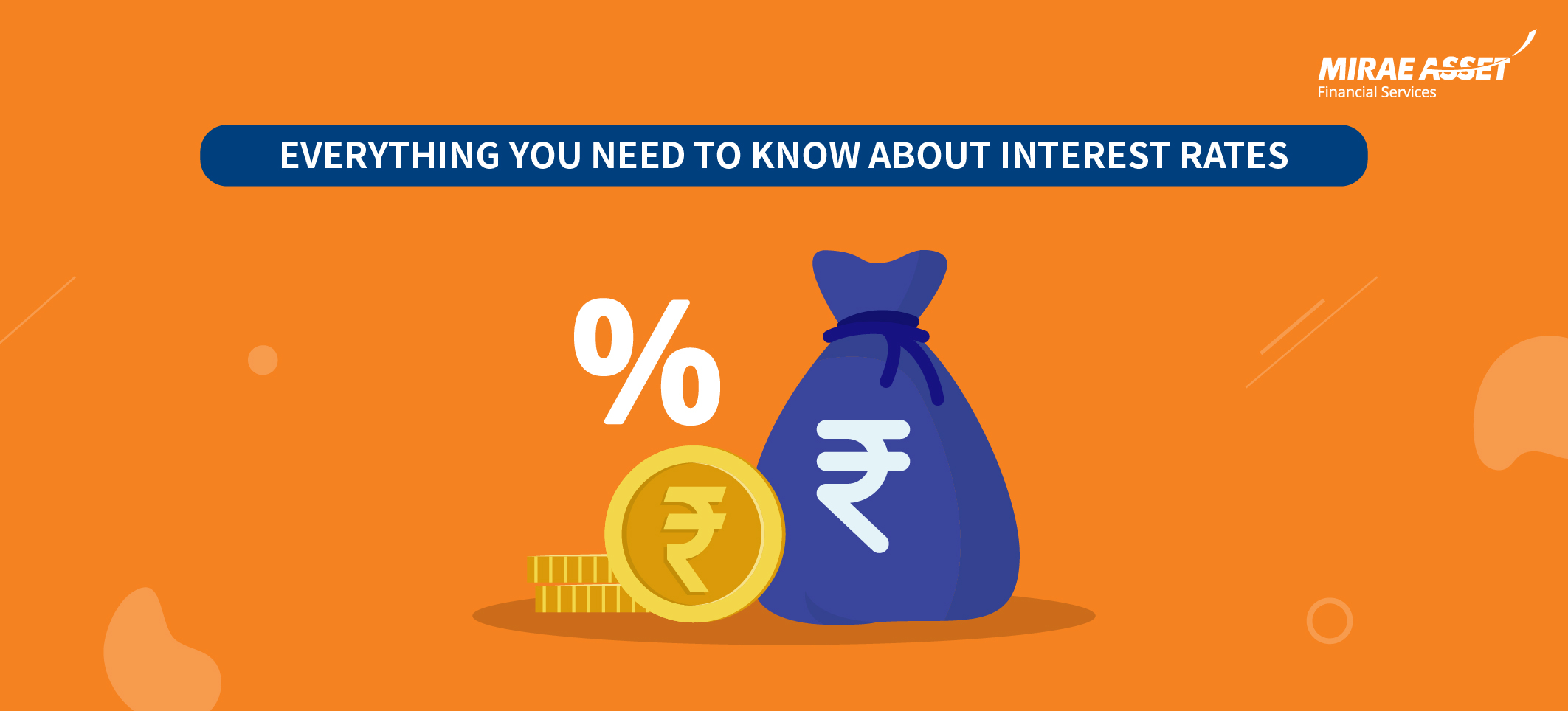Everything you need to know about interest rates

Understanding Interest Rates from the basics
Whether you're applying for a home loan, using a credit card, or investing your money, interest rates are at the heart of it all. But what exactly is an interest rate, and how does it affect your money?
In this blog, we will understand interest rates from scratch. Let’s understand their meaning, how they are calculated, why they are charged, and how floating rates work in India.
What Is Interest Rate and Why Is It Charged?
Interest rate is the cost of borrowing money. When you take a loan from a bank or lender, they charge interest as compensation for the risk they take and the time value of money.
For example, if you borrow ₹1,00,000 at 10% annual interest, you are essentially paying ₹10,000 extra per year to use that money.
Think of it as a rental fee for using someone else's money. This charge compensates the lender for:
- The risk of lending
- The opportunity cost of using that money elsewhere
- The time value of money, i.e., money today is worth more than the same amount in the future
How interest rate is calculated:
There are two methods used to calculate interest on loans and investments:
1. Simple Interest (SI)
Simple interest is calculated on the original principal amount throughout the loan tenure.
Formula:
SI = (P × R × T) / 100
Where:
P = Principal
R = Rate of Interest
T = Time in years
Example:
If you borrow ₹1,00,000 at 10% simple interest for 3 years:
SI = (1,00,000 × 10 × 3) / 100 = ₹30,000
So, you pay ₹1,30,000 in total.
2. Compound Interest (CI)
Compound interest is calculated on the principal plus the accumulated interest. It’s "interest on interest" and is more common in real-world loans.
Formula:
CI = P × (1 + R/100)^T – P
Example:
If you borrow ₹1,00,000 at 10% compound interest for 3 years:
CI = 1,00,000 × (1 + 10/100)^3 – 1,00,000
= ₹1,00,000 × 1.331 – ₹1,00,000 = ₹33,100
So, you pay ₹1,33,100 in total — which is ₹3,100 more than simple interest.

Online Personal Loan EMI Calculator
Types of Interest Rates: Fixed vs. Floating
Fixed Interest Rate
- The interest rate remains unchanged throughout the loan tenure.
- Easier to budget as the EMI stays constant.
- Common in personal loans or car loans.
Example: If your personal loan has a fixed rate of 12% for 3 years, the rate stays the same regardless of market changes.
Floating Interest Rate
- The interest rate fluctuates based on a benchmark rate.
- EMIs may increase or decrease over time.
- Common in home loans, loan against property, or education loans.
This type of rate adjusts based on external market conditions, making it suitable for long-term loans where borrowers expect interest rates to fall.

Personal Loan Interest Rate & Charges
How Are Floating Interest Rates Decided in India?
Floating interest rates in India are usually linked to external benchmarks set by regulatory bodies or the bank’s internal lending rate.
Types of Benchmark Rates in India
1. Repo Rate (External Benchmark)
This is the rate at which the Reserve Bank of India (RBI) lends money to commercial banks. When the repo rate changes, banks adjust their lending rates accordingly. It’s the most widely used external benchmark for floating rate retail loans today.
2. T-Bill Yield (91-day Treasury Bill)
This refers to the return on short-term government securities. It reflects market interest rate trends and can be used as a benchmark for certain loans.
3. MCLR (Marginal Cost of Funds-Based Lending Rate)
This is an internal benchmark set by banks based on the cost of raising funds, operating costs, and tenure risk. MCLR was widely used before external benchmarking became mandatory for retail loans in 2019.
4. External Benchmark Lending Rate (EBLR)
Introduced by the RBI to bring more transparency, the EBLR is directly linked to an external benchmark like the repo rate or T-Bill yield. It ensures faster transmission of policy rate changes to borrowers.
Loans Typically with Floating Interest Rates:
- Home Loans
- Loan Against Property
- Education Loans
- Loan Against Mutual Funds and Shares
How Floating Interest Is Calculated (With Example)
Suppose you take a home loan of ₹50 lakhs with a floating rate of:
EBLR (Repo Rate) = 6.50%
Spread = 2.00%
Total Interest Rate = 6.50% + 2.00% = 8.50%
Now, if RBI cuts the repo rate by 0.25%, your interest rate will also drop to 8.25% (assuming the spread stays the same).
This change will reduce your EMI or overall interest burden, depending on the loan structure.
Why Understanding Interest Rates Matters
Knowing how interest rates work empowers you to make smarter financial decisions — whether you’re borrowing or investing. Understanding the difference between simple and compound interest, fixed and floating rates, or how benchmarks influence your EMI can help you:
- Choose the right loan product
- Plan your repayments effectively
- Optimize costs over the long run
Before signing a loan agreement, always check how the interest is being calculated, and ask whether it's fixed or floating.
